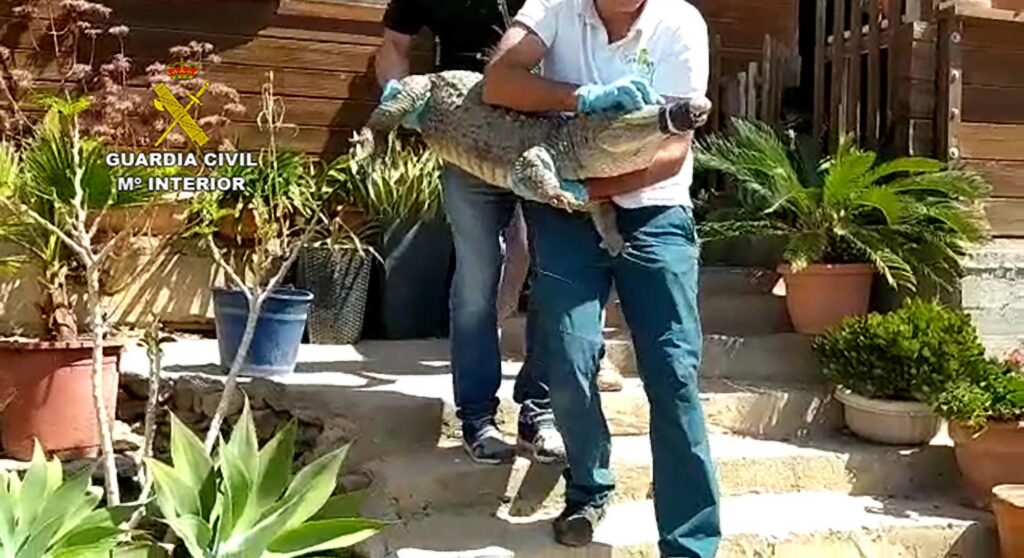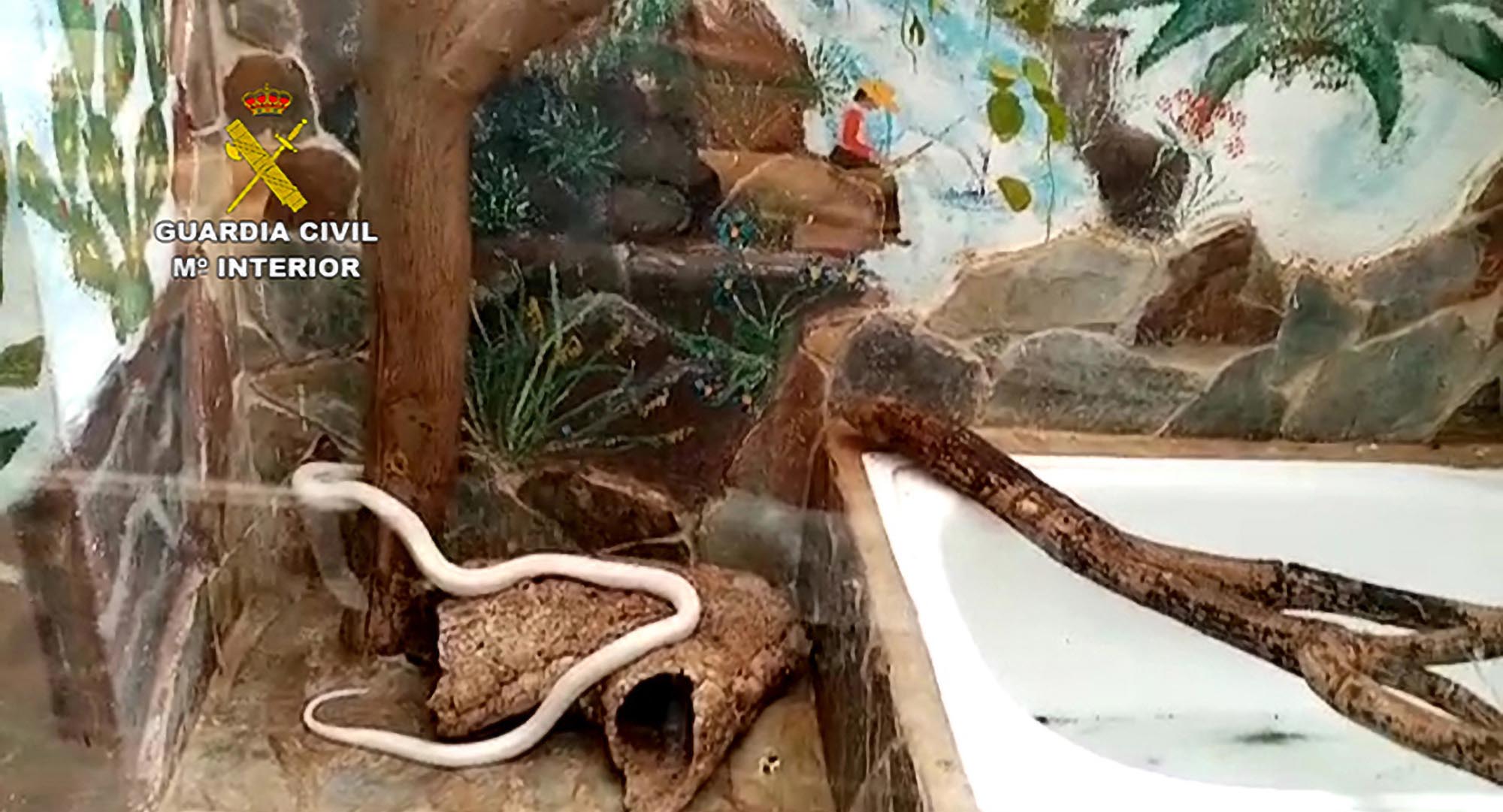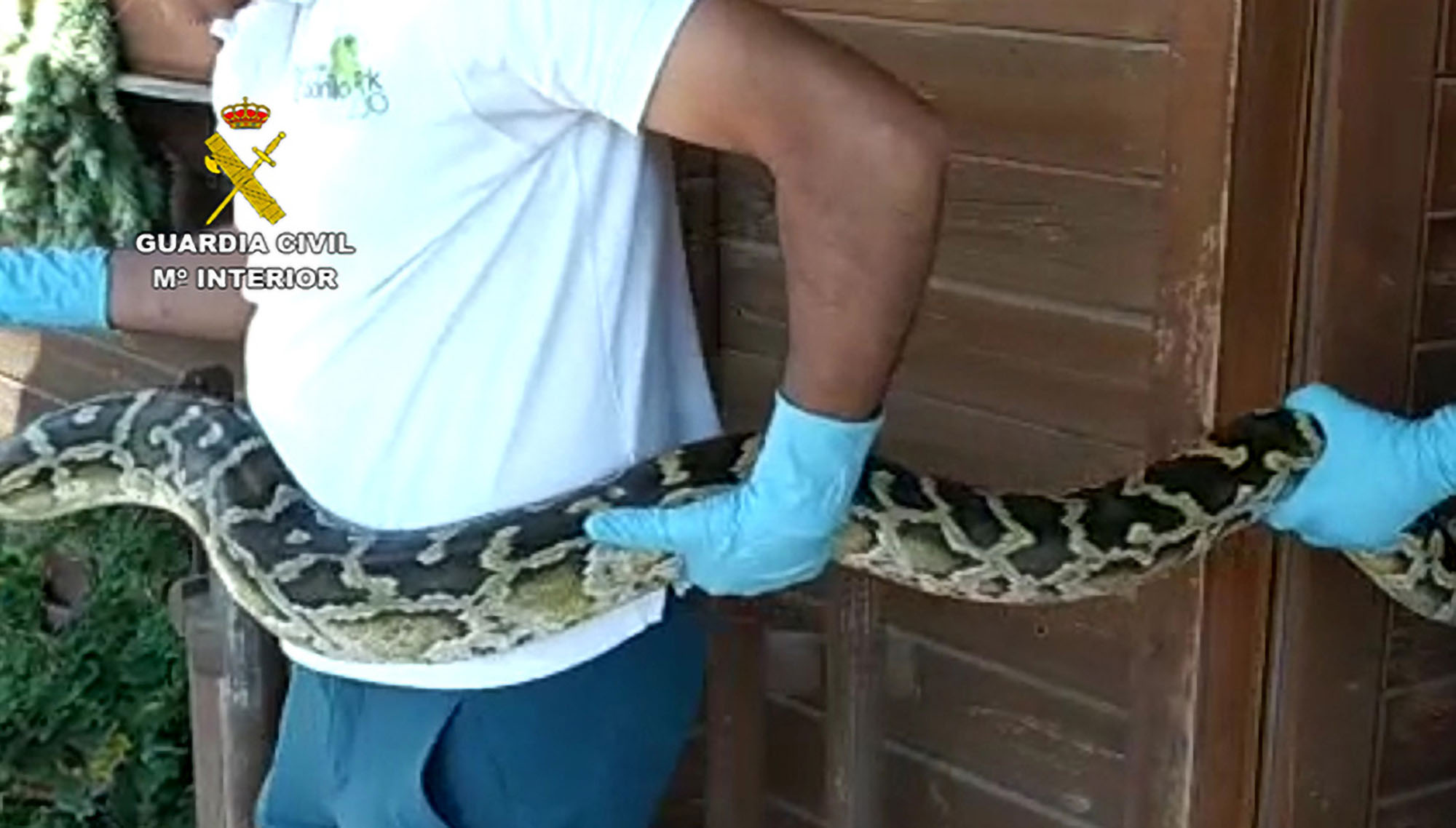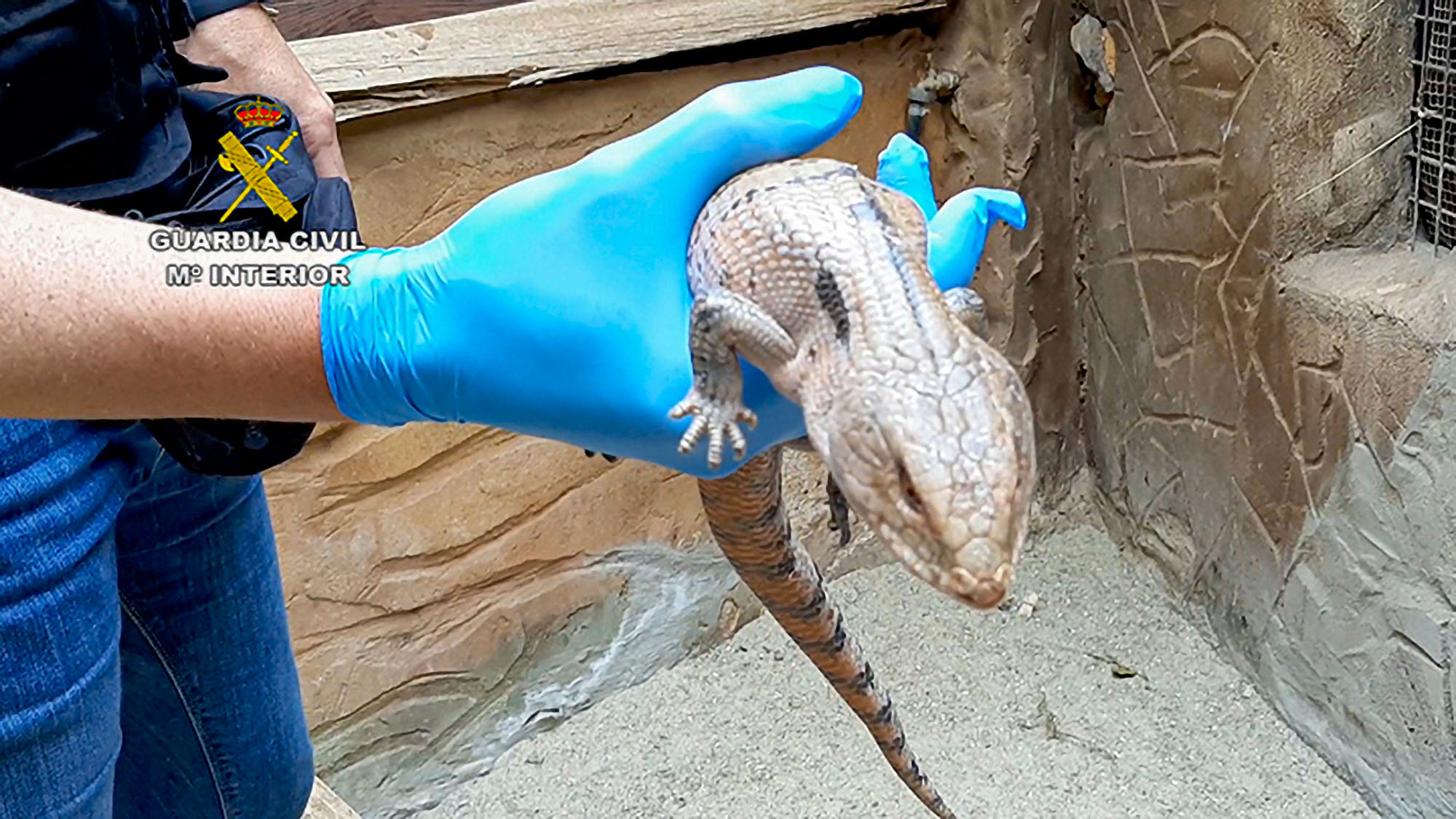The Spanish police have seized 139 animals – many of them dangerous – from a home in Gran Canaria after the owner died.
The Nature Protection Service (SEPRONA) of Las Palmas de Gran Canaria in the Spanish Canary Islands said 118 animals are an invasive species and 21 are considered dangerous animals.
The authorities said the seized animals “have a high reproductive capacity and pose a serious problem for the ecosystem, as well as being able to transmit dangerous diseases to humans”.
The animals, which included a ball python, two Burmese pythons, a dwarf caiman, and two bearded dragons, were seized from a home in the rural municipality of San Bartolome de Tirajana in Gran Canaria.
The Interior Ministry said in a statement on 20th March: “The Nature Protection Service of Las Palmas has seized over 139 specimens, of which 118 of them are catalogued as invasive species and 21 as dangerous animals, and included in the CITES [Convention on International Trade in Endangered Species of Wild Fauna and Flora] agreement and in the Spanish list of invasive exotic species.
“The facts were established in San Bartolome de Tirajana after the Civil Guard learned that a person, who had recently died, may have left a large collection of non-domestic animals that are prohibited to own in a private property that he had turned into a zoo.

“The SEPRONA Patrol of San Mateo contacted a relative of the deceased, who voluntarily agreed to enter the house for an inspection of the facilities where the animals were located, as well as their capture and transfer to an authorised place, Cocodrilo [Crocodile] Park on this occasion.
“Among the species seized were one ball python, two Burmese pythons, one dwarf caiman, two bearded dragons, two Greek tortoises, 34 crayfish, one leopard gecko, 46 giant African snails, seven colubrid snakes, one American bullfrog, one eastern long-necked turtle, eight iguanas, one spectacled caiman, 23 red-eared sliders, 13 blue-tongued lizards, three African spurred tortoises, 200 rats, 100 mice, and an undetermined number of cockroaches, worms and crickets.”
The statement added: “The Civil Guard points out that invasive alien species (IAS) are one of the main causes of biodiversity loss in the world.”
The authorities said an IAS is an animal that has been “introduced or established in an ecosystem or natural or semi-natural habitat that is an agent of change and a threat to native biodiversity, either by its invasive behaviour, or by the risk of genetic contamination”.



To find out more about the author, editor or agency that supplied this story – please click below.
Story By: Lee Bullen, Sub-Editor: William McGee, Agency: Newsflash
The Ananova page is created by and dedicated to professional, independent freelance journalists. It is a place for us to showcase our work. When our news is sold to our media partners, we will include the link here.




